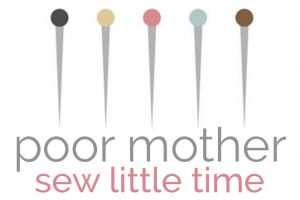Note: These notes will be edited from time to time as I make my pea coat. They may end up being more polished, and pictures may even be added!!
The fabric for my pea coat has arrived from Clothspot, it’s a really dark navy Melton in a lovely soft 80%wool 20% acrylic blend with a really chic sheen to it. This needs careful handling. It would be a shame to spoil such a beautiful cloth with some less than perfect sewing. So I thought I’d brush up on some techniques.
Thread Theory have put together a fantastic collection of resources for sewing their Goldstream coat. And you’d find it hard to beat their sewalong for a tailored version
Here are some other resources I’ve found, plus some techniques I already know. I thought it would be handy to collect them together to remind me.
I’ve cut a muslin from some cotton ottoman fabric with a similar weight to my melton. This will mean I get a really good fit, the first step to getting a garment that looks handmade rather than home made. I can then take apart the muslin to use as he final pattern.
Preparing the fabric. As I’ll be pressing a lot while I’m constructing the jacket, I’ll need to get for shrinkage on a scrap. If it does shrink with pressing I’ll preshrink it by steam pressing as Carolyn describes here
Marking the fabric. I have french chalk, wax paper, white basting cotton. Mark all the pattern lines, notches, roll line for lapels, using tailor tacks.
Cutting: the fabric has nap so cut pieces with the nap running down. If the nap runs up, the garment may show wear for instance in the elbows.
Sewing: A sewing machine needle in size 12 – 14 sharp is a good size for this wool. Finishing the cut edges isn’t necessary as this wool doesn’t ravel easily. Lengthening your stitch is helpful; instead of 10 stitches per inch try 8 stitches per inch. Stitch with the nap
Understitch by hand
Beeswax on hand sewing thread prevents kinks and strengthens the thread. Run the thread through the beeswax and iron on hot.
Polyester thread gives a more elastic seam
Topstitching: sew each front from the hem to centre back, not all the way round in one go.
Interfacing isn’t necessary but if you wish to use interfacing a medium weight sewn in interfacing is desirable, such as a lightweight hair canvas, which is applied to the coat front like this.
3/8″ cotton twill tape supports the roll line
Pressing: These notes are from Claire Shaeffer’s book Sew any Fabric:
Cover the ironing board with another wool fabric to press onto.
Use a wool press cloth on the right side.
Press bound buttonholes and welts wrong side up on a thick towel.
For sharper foldlines, rub the fold on the wrong side with a bar of ivory soap. Fold in place an press using a press cloth.
For sharp, wel pressed seams, press the seam flat. The rub each side of the stitching line with a bar of ivory soap, and press it open over a seam roll. Cover with clapper. If necessary press again and spank with clapper. Leave until dry.
To apply additional moisture when pressing, cover the garment with a dry cloth. Rub with a wet but not dripping sponge over the section to be pressed, then press.
For a sharper press at edges, place the open seam over a point presser and pre before trimming and turning right side out.
To hold layers in position when pressing an edge, baste about ¼” from edge, using soft cotton basting thread to avoid an imprint.
A good steam iron is essential for all tailoring. If your iron doesn’t produce enough steam, use a damp pressing cloth on the wrong side of the garment. Press the seams open except at the armscye or armhole where the seam allowance is graded then pressed toward the sleeve The beauty of wool Melton tailoring is that ease can be molded or shrunk in by steam.
Buttonholes. I’ll be making bound buttonholes so a test is essential. Beth has a really good series of posts on bound buttonholes in her wool coat here and here . Catherine made bound buttonholes on her Chanel style jacket here. Cut the buttonholes with a sharp chisel. And in this discussion over at Stitcher’s Guild, fierce pressing of the finished buttonhole is recommended.
Added: another bound buttonhole tutorial with lots of pictures here
Of course I want the button holes to look good from both sides when I fasten the top button. Lapel open = Facing buttonhole shows
Lapel fastened = outer buttonhole shows.
I need to use the windowpane method, described in my Reader’s Digest Sewing Handbook and in Claire Shaeffer’s Fabric Sewing Guide.
Buttons.
Sew a small button to the inside to support the outer button. This prevents the fabric stretching where the button pulls.
Sew the shank long enough to accommodate the thickness of the layers of fabric at the buttonhole.
Thanks for reading. Comments are welcome!.
